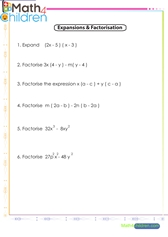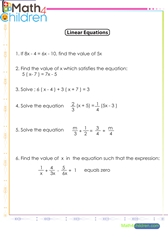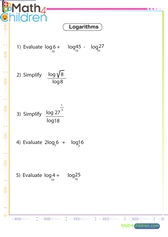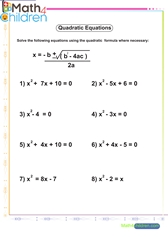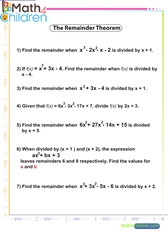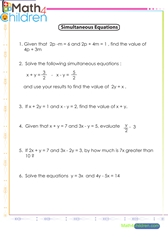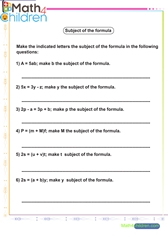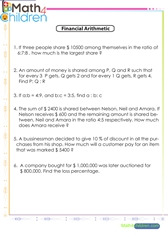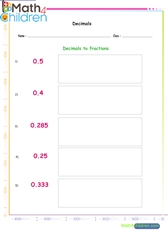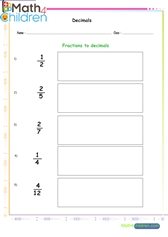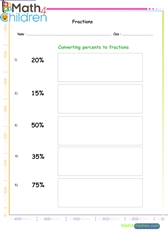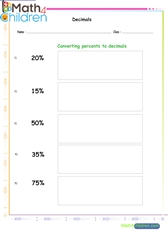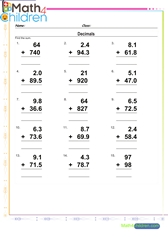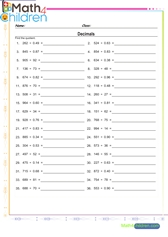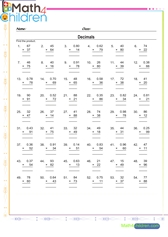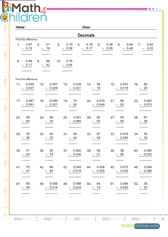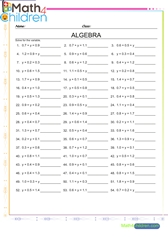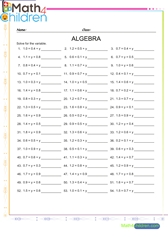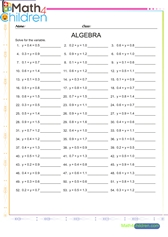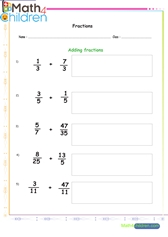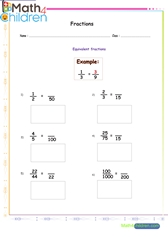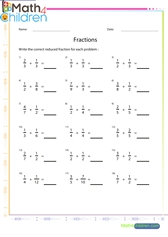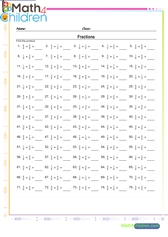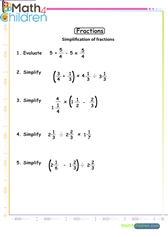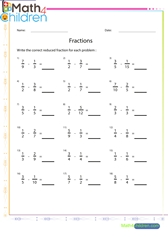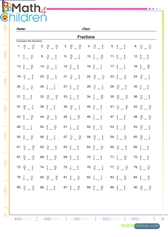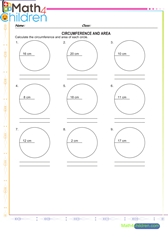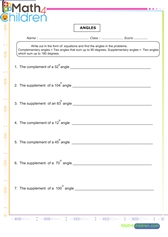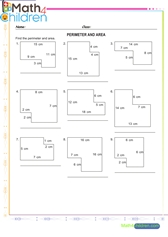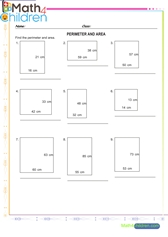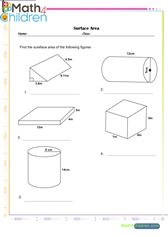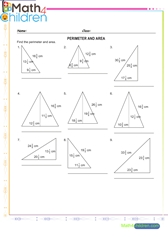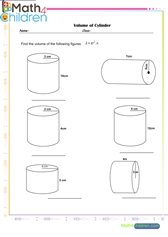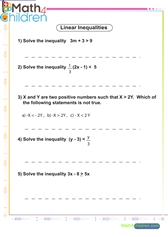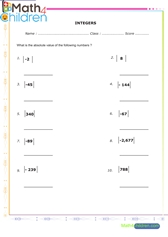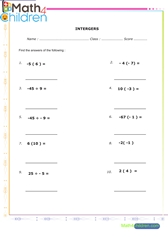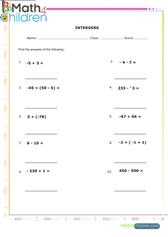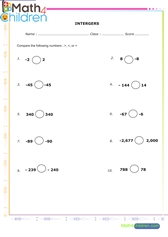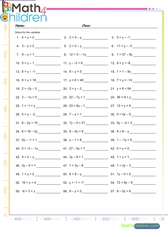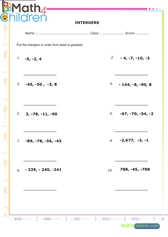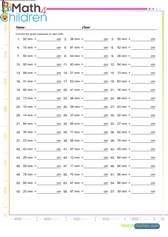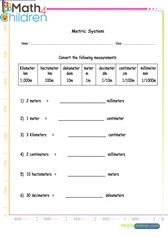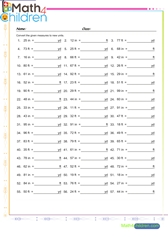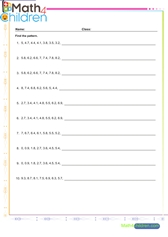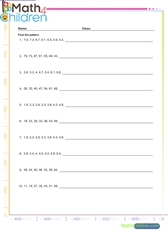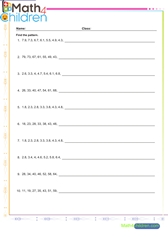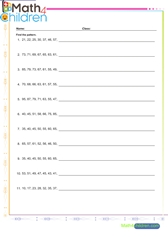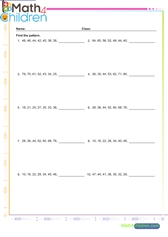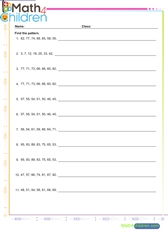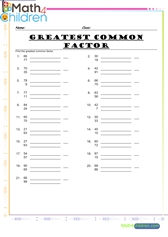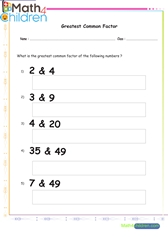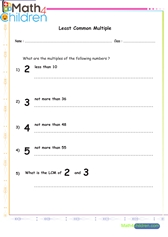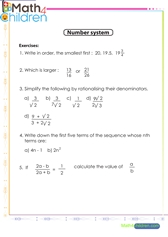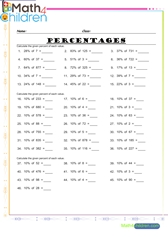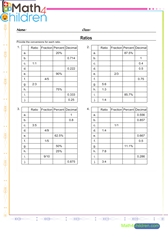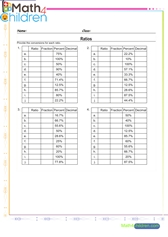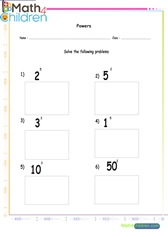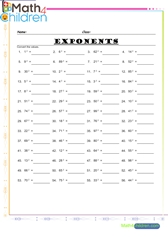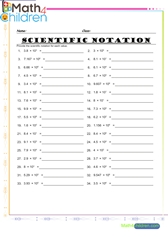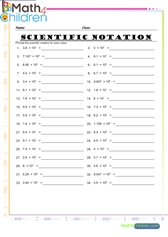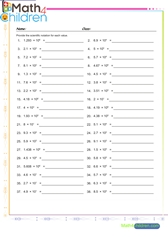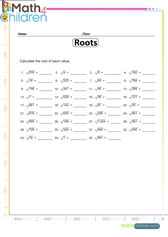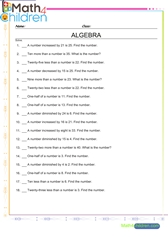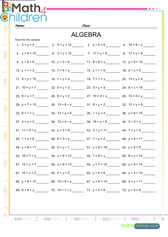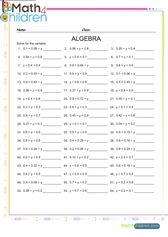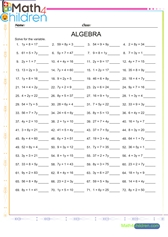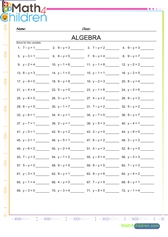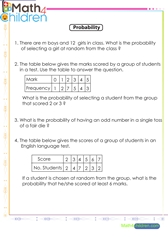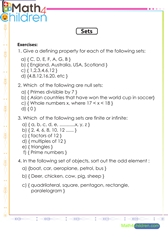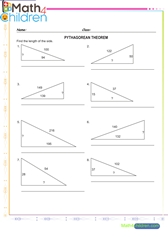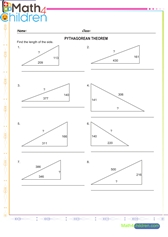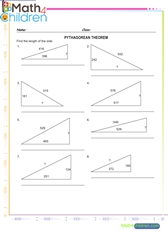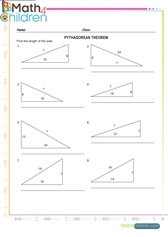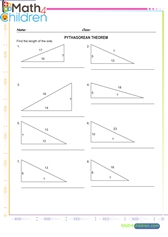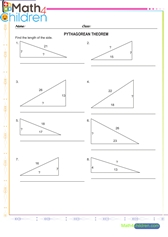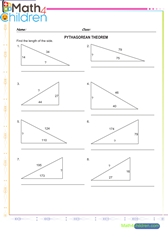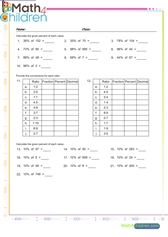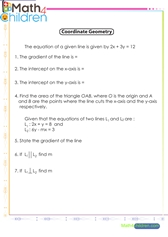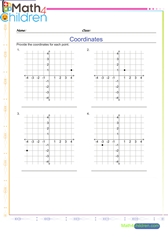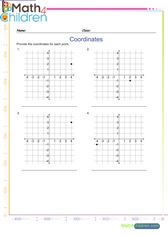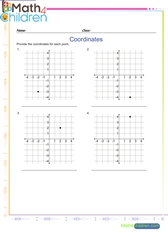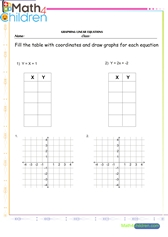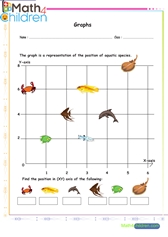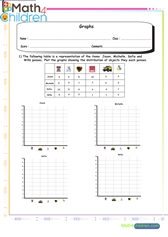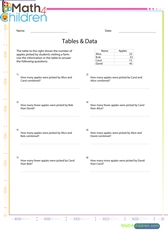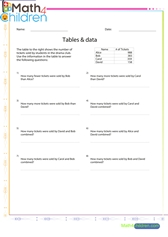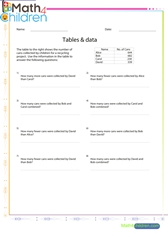Model Activity Task Class 8 Math Part 1
Mathematics is a subject that often requires abstract thinking and problem-solving skills. However, students can sometimes struggle to understand mathematical concepts when they are presented in a purely theoretical manner. To address this challenge, educators have introduced various teaching methodologies to make math more engaging and relatable. One such approach is the use of model activity in the classroom. In this article, we will explore the concept of model activity and its significance in Class 8 Math. Continue Reading Below >>
Converting decimals to fractions
Converting decimals to fractions printable math worksheet
Converting fractions to decimals
Converting fractions to decimals printable math worksheet
Converting fractions to percents
Converting fractions to percents printable math worksheet
Converting percentage to decimals
Converting percentage to decimals printable math worksheet
Converting fractions to percents
Converting fractions to percents printable math worksheet
Complementary supplementary angles
Complementary supplementary angles printable math worksheet
Surface area of complex figures
Surface area of complex figures printable math worksheet
Metric system converting scales
Metric system converting scales printable math worksheet
Ratio percent decimals fractions convertions
Ratio percent decimals fractions convertions printable math worksheet
Pre algebra multiplication addition
Pre algebra multiplication addition printable math worksheet
Triangle sides pythagorean theoream 6
Triangle sides pythagorean theoream 6 printable math worksheet
Triangle sides Pythagorean theorem
Triangle sides pythagorean theorem 1 printable math worksheet
Triangle sides Pythagorean theorem
Triangle sides pythagorean theorem 2 printable math worksheet
Triangle sides Pythagorean theorem
Triangle sides pythagorean theorem 3 printable math worksheet
Triangle sides pythagorean theorem
Triangle sides pythagorean theorem 4 printable math worksheet
Triangle sides pythagorean theorem
Triangle sides pythagorean theorem 5 printable math worksheet
Triangle sides pythagorean theorem
Triangle sides pythagorean theorem 7 printable math worksheet
Importance of Model Activity in Mathematics
Model activity plays a crucial role in enhancing students' understanding of mathematical concepts. It allows them to visualize and interact with abstract ideas, making the learning process more concrete and meaningful. By incorporating hands-on experiences and real-life applications, model activity fosters a deeper comprehension of mathematical principles and promotes active engagement in the learning process.
Understanding the Basics of Model Activity
Model activity involves the use of physical or virtual models to represent mathematical concepts and phenomena. These models serve as visual aids that enable students to explore and manipulate various mathematical ideas. They can be constructed using everyday objects, digital simulations, or even interactive software. The key purpose of model activity is to bridge the gap between theoretical concepts and their practical applications, enabling students to develop a solid foundation in mathematics.
Benefits of Model Activity in Class 8 Math
-
Enhanced comprehension: Model activity provides students with a tangible representation of abstract mathematical ideas, helping them grasp complex concepts more easily.
-
Improved problem-solving skills: By engaging in hands-on activities, students develop critical thinking and problem-solving skills necessary for tackling math-related challenges.
-
Active learning: Model activity encourages active participation and collaboration among students, promoting a deeper understanding of the subject matter.
-
Real-world connections: By relating mathematical concepts to real-life scenarios, model activity helps students recognize the practical relevance of mathematics in their everyday lives.
-
Motivation and engagement: The interactive nature of model activity sparks students' curiosity and interest in mathematics, making the learning experience enjoyable and meaningful.
Step-by-Step Guide to Conduct a Model Activity
To conduct a successful model activity in a Class 8 Math lesson, follow these steps:
-
Identify the learning objectives: Determine the specific mathematical concepts or skills you want to reinforce through the model activity.
-
Select an appropriate model: Choose a model that aligns with the learning objectives and is suitable for the grade level and complexity of the topic.
-
Prepare the necessary materials: Gather all the required materials, such as physical objects, diagrams, or technology tools, to create the model.
-
Introduce the activity: Provide a clear explanation of the model activity, its purpose, and how it relates to the mathematical concepts being taught.
-
Demonstrate the model: Show students how the model represents the mathematical concept or problem and explain its different components and variables.
-
Facilitate exploration: Allow students to interact with the model, encouraging them to manipulate it, observe patterns, and make connections to the underlying math concepts.
-
Encourage discussion and reflection: Engage students in discussions about their observations, encourage them to share insights, and facilitate reflection on the mathematical principles involved.
-
Relate to real-life applications: Help students understand how the mathematical concept or problem can be applied in real-world scenarios, reinforcing the practical relevance of the topic.
-
Summarize and debrief: Wrap up the activity by summarizing the key takeaways and addressing any questions or misconceptions that may have arisen during the exploration.
-
Consolidate learning: Connect the model activity to further practice exercises or problem-solving tasks to reinforce the understanding of the mathematical concept.
Examples of Model Activities for Class 8 Math
-
Building geometric shapes using toothpicks and marshmallows to explore properties of angles and symmetry.
-
Simulating the concept of fractions using colored blocks to demonstrate addition, subtraction, and equivalence.
-
Creating a scale model of a city to understand concepts of scale and proportion in measurement.
-
Using graphing software to visualize and analyze data sets, introducing concepts of statistics and data representation.
-
Designing and constructing a bridge model to study principles of geometry, forces, and structural stability.
Integrating Model Activity with Real-Life Scenarios
Model activities can be enriched by connecting them to real-life scenarios. For example:
-
Exploring the use of algebraic expressions to calculate the expenses of planning a trip.
-
Investigating the relationship between the area of a garden and the amount of fertilizer needed for optimal plant growth.
-
Analyzing the trajectory of a projectile in physics using mathematical models and simulations.
By incorporating real-life contexts, students can develop a deeper understanding of how mathematical concepts are applied in practical situations, enhancing their problem-solving abilities and promoting interdisciplinary connections.
Challenges and Solutions in Implementing Model Activity
Implementing model activities in the classroom may pose certain challenges. Some common issues include:
-
Limited resources: Lack of materials or technology can hinder the effective implementation of model activities. Teachers can seek alternative resources, such as online simulations or low-cost materials, to overcome this challenge.
-
Time constraints: Model activities require sufficient time for preparation, execution, and reflection. Teachers can plan ahead and allocate dedicated time slots for model activities to ensure they are adequately integrated into the curriculum.
-
Classroom management: Facilitating hands-on activities may require additional management strategies to ensure a productive and focused learning environment. Clear instructions, group work guidelines, and effective communication can help address this challenge.
-
Assessment and evaluation: Assessing students' learning outcomes from model activities can be challenging. Teachers can use a combination of observation, student self-reflection, and traditional assessments to gauge understanding and provide feedback.
Role of Teachers in Facilitating Model Activities
Teachers play a crucial role in facilitating model activities and maximizing their educational impact. Here are some key responsibilities of teachers in this context:
-
Planning and preparation: Teachers need to identify suitable model activities, gather necessary resources, and align them with the curriculum and learning objectives.
-
Instructional guidance: Teachers should provide clear instructions, explanations, and demonstrations to ensure students understand the purpose and process of the model activity.
-
Facilitation and support: Teachers should actively engage with students during the activity, offering guidance, answering questions, and fostering collaboration among students.
-
Reflection and debriefing: After the activity, teachers should facilitate discussions, encourage reflection, and summarize the key takeaways to consolidate learning.
-
Adaptation and differentiation: Teachers should modify the model activities based on the diverse learning needs and abilities of their students, ensuring inclusivity and accessibility.
Assessing and Evaluating Model Activities
Assessing students' progress and learning outcomes from model activities is essential to evaluate the effectiveness of these teaching methods. Here are some assessment strategies:
-
Observation: Teachers can observe students' engagement, participation, and problem-solving approaches during the model activity.
-
Student self-reflection: Encourage students to reflect on their learning experiences, document their observations, and share insights through journals or group discussions.
-
Performance tasks: Assign tasks or projects that require students to apply the knowledge gained from the model activity to solve related problems or create their own models.
-
Traditional assessments: Supplement the model activity with quizzes, tests, or written assignments that assess students' understanding of the mathematical concepts covered.
Enhancing Critical Thinking Skills through Model Activity
Model activities provide an excellent opportunity for students to develop critical thinking skills. Here's how they promote critical thinking:
-
Problem-solving: Model activities encourage students to analyze problems, explore multiple solutions, and make informed decisions.
-
Inquiry-based learning: Students are encouraged to ask questions, investigate, and draw conclusions based on their observations and interactions with the model.
-
Analytical thinking: Model activities require students to analyze data, patterns, and relationships, fostering logical reasoning and analytical thinking skills.
-
Evaluating evidence: Students learn to evaluate the validity and reliability of their observations and make evidence-based claims.
By integrating critical thinking into model activities, students not only strengthen their mathematical abilities but also develop skills that are valuable in various other disciplines and real-life situations.
Model Activity and Collaborative Learning
Model activities promote collaborative learning, which involves students working together in groups to achieve common learning goals. Collaborative learning in model activities offers several benefits:
-
Peer interaction: Students can share their ideas, perspectives, and problem-solving strategies, enriching their understanding of the mathematical concepts.
-
Communication skills: Collaborative learning encourages effective communication, active listening, and the ability to explain mathematical concepts to others.
-
Cooperative problem-solving: Students learn to collaborate, compromise, and combine their strengths to solve complex math problems using the model.
-
Social-emotional development: Collaborative learning fosters teamwork, empathy, and respect for diverse viewpoints, nurturing students' social and emotional skills.
Conclusion
Model activities are powerful teaching tools that enhance students' understanding of mathematical concepts and foster their problem-solving skills. By incorporating hands-on experiences and real-life connections, model activities make math more engaging, relatable, and accessible to students. Teachers play a vital role in designing, facilitating, and assessing these activities to ensure optimal learning outcomes. By integrating model activities into the curriculum, educators can inspire a love for math and empower students to become confident and proficient mathematicians.
FAQs
-
What is the purpose of model activities in Class 8 Math? Model activities aim to make math concepts more tangible and relatable by using physical or virtual models. They enhance comprehension, promote active learning, and foster problem-solving skills.
-
How can teachers integrate model activities with real-life scenarios? Teachers can relate model activities to real-life situations by demonstrating the practical applications of mathematical concepts, such as budgeting, measurements, or analyzing data.
-
What are some challenges in implementing model activities? Limited resources, time constraints, classroom management, and assessment difficulties are common challenges. Teachers can overcome these challenges through proper planning, alternative resources, and effective communication.
-
How can model activities enhance critical thinking skills? Model activities encourage students to engage in problem-solving, inquiry-based learning, analytical thinking, and evaluating evidence. These skills promote critical thinking and logical reasoning abilities.
-
How does collaborative learning benefit model activities? Collaborative learning in model activities facilitates peer interaction, communication skills, cooperative problem-solving, and social-emotional development among students. It enhances the learning experience and fosters teamwork.

